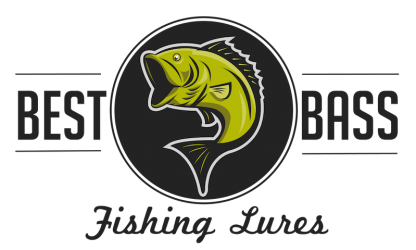Stickbaits look deceptively simple. They have no propellers, flat faces, diving lips, or anything else to give them any action. They actually are just a Prop Bait without the propellers. They float on top of the water and…just float.
When retrieved they…just slice through the water. That’s all. The sinking soft plastic versions just sink slowly, and just lay there. When you retrieve them, they just…retrieve. One might wonder what all the fuss is. Well, believe it or not, they catch bass.
History
In 1902, former beekeeper James Heddon began making wooden lures in Dowagiac, Michigan. He formed the Heddon Lure Company. One of his more popular lures was a simple wooden tapered, colored dowel called the Zaragossa. It was one of their best sellers for a long time.
When the company switched to making plastic lures in 1939, it was renamed the Zara Spook. This was because the plastic was originally clear colored and that still one of the best colors.
Sadly, starting in the 1950s, Heddon was purchased by several companies, and finally by the Alabama based company EBSCO (Elton, Bryson and Stephens Company). But most of the original Heddon lures are still produced, and the Zara Spook is still one of their flagship models.
Fishing Stickbaits
Stickbaits are fished by casting them out and letting them sit a bit, just like poppers. The difference is that on the retrieve, you have to supply the lure’s action by moving the rod tip left, right, up, down, or any combination. This is known as ‘walking the dog‘.
Raising the rod tip high and quickly can make the lure hop out of the water like a jumping baitfish. You can stick your rod tip down in the water and reel in, making the lure dive to a foot or more, then stop and let it surface. Moving the rod tip to the left or right makes the lure swim left, or swim right.
You can move your rod tip rapidly left and right to create a swimming action. You can even stick your rod tip in the water, and move it rapidly left and right to create a diving-swimming action, as well as making a lot of noise in the water to attract bass to the general area. The technique you use depends on your preferences, and prevailing conditions.
They have been catching bass for over 70 years. It’s a good idea to have a few of these in your arsenal.The popularity of these is probably due, at least in part, because of the fact they they are loads of fun to play with, even if you don’t catch any fish with them.
It’s almost like having your own little radio-controlled minnow. Like fly fishing, part of the appeal is the challenge of seeing how close you can imitate the real thing. But they also catch their share of fish. They are useful in some situations where normal lures fail to produced.
Stickbaits are slender torpedo shaped hard or soft plastic baits like the Rapala Original Floating Minnow or Senko worms. Stick baits can float, suspend or dive. When fishing a topwater stick bait, choose a floating or shallow diving lure. The size of the stick bait you choose will depend on baitfish in the area.
Color will depend on water clarity and cloud cover. Try brighter, more vibrant colors in darker water or cloudy days, and in clearer water, use lighter, more natural colors, like lures with white a belly that mimic shad. When the sun is shining, try lure colors that are silver/metallic and “throw flashes” on jerks during the retrieve.
The action of the lure is created by the angler’s manipulation of the line on the retrieve. Initial jerks are hard and fairly fast in order to get the bait just under the surface of the water. On the pause, the stick bait will float back up to the surface.
Hard jerks, or twitches, will pull the stick bait below the surface in a straight line. The combination of twitches, jerks and pauses mimic the erratic darting action of an injured or dying baitfish, struggling near the surface of the water.
Vary the speed of your retrieve, how hard your jerk or twitch, and the length of pauses to determine what the bass want. In colder water, try soft jerks and longer pauses. In warmer water, the action can be much faster.
Pause length will depend on water temperature and bass activity. Pauses can be as short as 3 seconds or as long as 15 to 30 seconds. Fish stickbaits around rocks, vegetation, docks, logs, stumps, outside channel swings, and near the ends of bluffs.
Like most lure choices, the size and color of the Senko should match the color and size of other bait in the area. Good choices include purples, watermelon and pumpkin colors in clearer water and black with blue flake in darker water.
Bass often strike on the fall. You can also skip the worm around or under docks and laydowns, or bounce off poles. Bass can’t resist worms that plop or slide lightly into the water as if they just fell from a tree; they often strike early on the fall.


